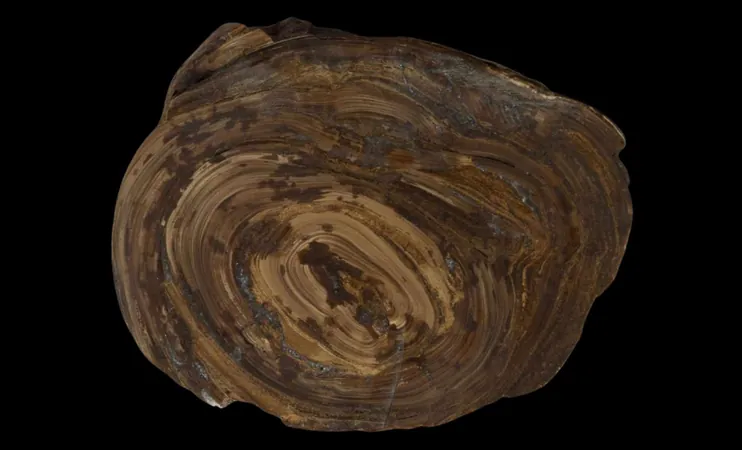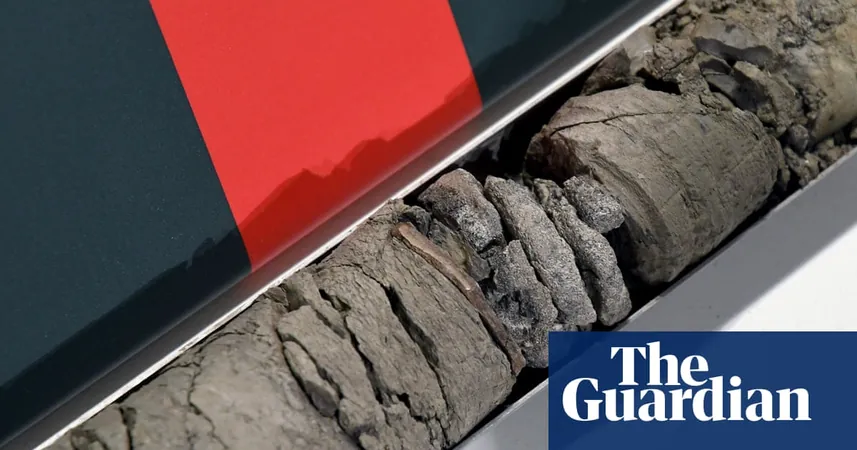
Unearthing History: The Discovery of the Oldest Stomach Stone Fossil
2025-06-02
Author: Jessica Wong
A Groundbreaking Find in Paleontology
Paleontologists have made a sensational discovery—what they believe to be the oldest stomach stone fossil, dating back around 150 million years! This astonishing find was made along England’s iconic Jurassic Coast, a UNESCO World Heritage Site celebrated for its vast geological history that spans the Triassic, Jurassic, and Cretaceous periods.
Jurassic Coast: A Historical Treasure Trove
The Jurassic Coast stretches nearly 100 miles from East Devon to Dorset and is a hotspot for geological wonders. It was here, in the picturesque Kimmeridge area, that Dr. Steve Etches MBE unearthed the ancient stomach stone. Remarkably, this fossil extends the known record of such stones—known as calculi—by an incredible 59 million years.
What Are Gastroliths and Why Are They Important?
Gastroliths are stones that form in the digestive systems of animals, but linking them to specific species can be quite challenging without skeletal evidence. Nigel Larkin, a paleontologist from the University of Reading, explained the complications: "Unless stomach stones are actually found preserved within a skeleton, identifying the originating animal becomes nearly impossible." This uncertainty adds to the intrigue of these ancient relics.
Insights into Ancient Marine Life
The size and geological context of the stomach stone suggest it likely belonged to a large marine reptile. Larkin identifies potential candidates such as ichthyosaurs, plesiosaurs, and pliosaurs, emphasizing that these stones do not originate from terrestrial dinosaurs. Despite this clarification, he deems the find exciting and rare, shedding light on prehistoric ecosystems.
Microscopic Evidence Confirms Authenticity
Dr. Ivan Sansom from the University of Birmingham meticulously analyzed the stone under a microscope. His findings confirmed that the fossil exhibits all the typical characteristics of a calculus formed in a gastrointestinal tract, affirming its status as an authentic stomach stone fossil.
What This Means for Our Understanding of Ancient Diets
Gastroliths serve various functions, including aiding digestion and stabilizing buoyancy in aquatic animals. This remarkable ancient stomach stone not only adds to our fossil record but also reveals insights into how marine reptiles from the Jurassic era processed their food. It suggests that these creatures employed gastroliths much like modern species, grinding their meals and enhancing their buoyancy.


 Brasil (PT)
Brasil (PT)
 Canada (EN)
Canada (EN)
 Chile (ES)
Chile (ES)
 Česko (CS)
Česko (CS)
 대한민국 (KO)
대한민국 (KO)
 España (ES)
España (ES)
 France (FR)
France (FR)
 Hong Kong (EN)
Hong Kong (EN)
 Italia (IT)
Italia (IT)
 日本 (JA)
日本 (JA)
 Magyarország (HU)
Magyarország (HU)
 Norge (NO)
Norge (NO)
 Polska (PL)
Polska (PL)
 Schweiz (DE)
Schweiz (DE)
 Singapore (EN)
Singapore (EN)
 Sverige (SV)
Sverige (SV)
 Suomi (FI)
Suomi (FI)
 Türkiye (TR)
Türkiye (TR)
 الإمارات العربية المتحدة (AR)
الإمارات العربية المتحدة (AR)